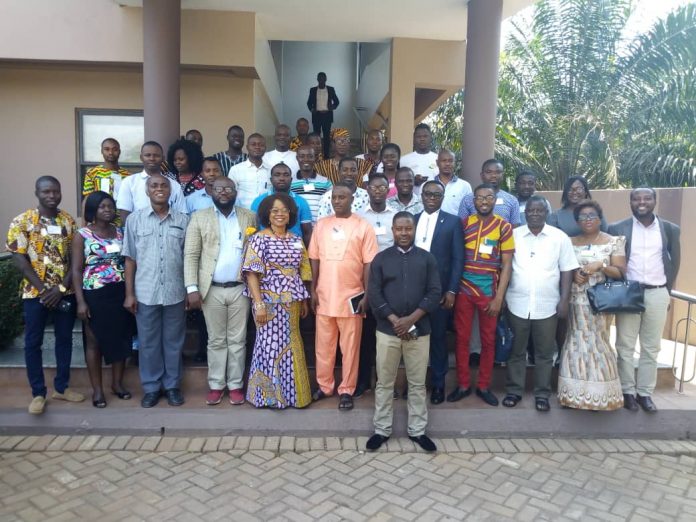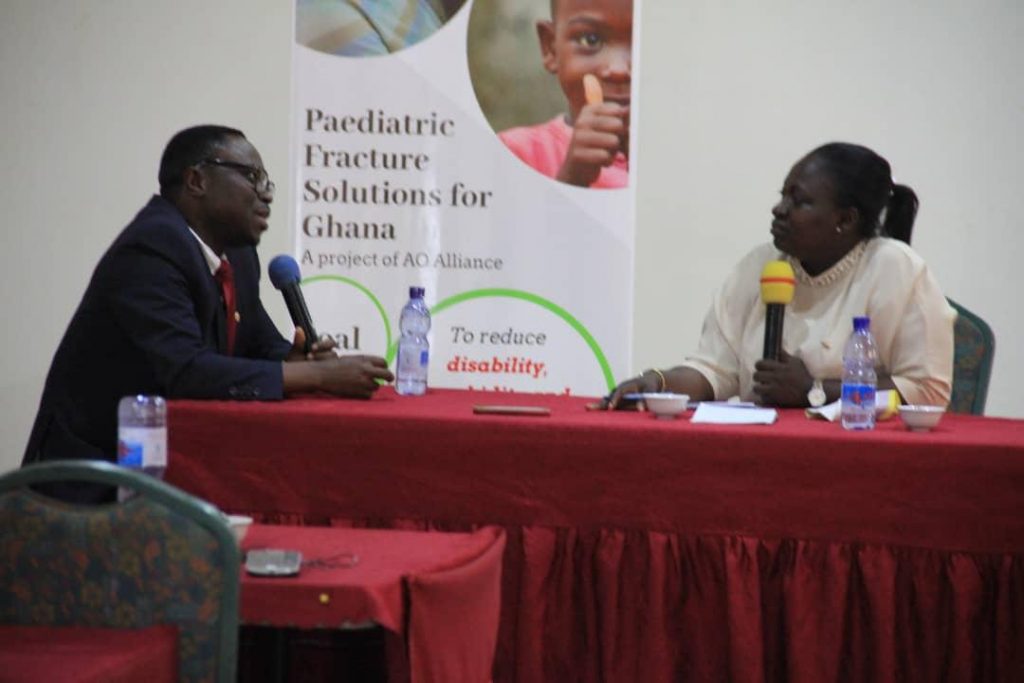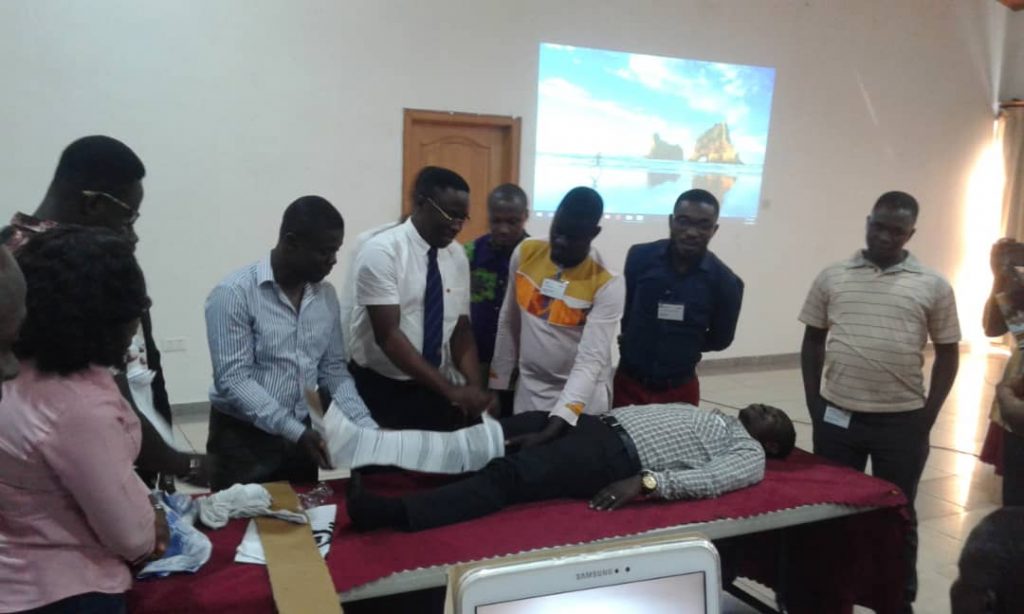
Some trauma and orthopaedic surgeons in Ghana have called for the establishment of a national bone bank in the country to put an end to what policy watchers have described as “needless amputations”.
“There are certain situations [where] somebody gets a fracture and the bone is extruded at the scene of the injury. So, the person arrives at the hospital without a huge segment of bone. In that case, we need another bone of that length to be able to replace the lost bone. And the practice is that we fall on a bone bank.
“A bone bank is just like a blood bank where we store bones that have been extracted from cadaver (a dead body), treated and stored so anytime we encounter a situation of massive loss of a segment of bone, we can fall onto the bone bank and, then, get a size that would fit that person. It can help reduce some of the amputations that we do in our hospitals,” said the Chairman of the Paediatric Fracture Treatment Committee, Dr Dominic Konadu-Yeboah.
Continuing, Dr Konadu-Yeboah, who is also a Senior Specialist at the Trauma and Orthopaedic Department of the Komfo Anokye Teaching Hospital (KATH) and fellow of the Ghana College of Surgeons, stated: “But we don’t have a bone bank in Ghana and to do that requires some parliamentary procedures or legal procedures. So, we are calling on the various stakeholders to help kick into motion the processes to set up a national bone bank to enhance the work of orthopaedic surgeons to help save a good number of limbs that are lost because you cannot reconstruct after injury.”
The surgeons made this call at a 3-day workshop organised for media practitioners in the northern sector by AO Alliance, a charitable organisation pushing for drastic reduction of high rate of injuries in the country and dedicated to improving fracture care through a project dubbed “Paediatric Fracture Solutions for Ghana”.
Trauma (any form of physical injury, namely fractures, dislocations, sprains, swellings, cuts, et cetera) has claimed more lives in Ghana than HIV/AIDS, malaria and tuberculosis combined, according to the experts, but ironically has received less attention than the ‘subordinate’ killer diseases or conditions.
The workshop, organised in collaboration with the Ghana College of Physicians and Surgeons, saw 42 journalists made aware of an urgent need to put the neglected epidemic under the spotlight and to sustain the campaign on trauma with emphasis on how paediatric fractures (fractures in children) could be effectively managed.

AO Alliance Laments Neglect of Injured Children
Concern for children took centre stage at the seminar with Dr Wilfred Labi Addo, an AO Alliance representative, expressing deep worry as he welcomed participants at the Miklin Hotels in Kumasi about the ‘insensitive response’ children in the country mostly received from parents or caregivers when injured.
He noted that many injured children were only treated at home with ointments applied to the affected parts and either taken to traditional bonesetters or referred to mothers of twins traditionally believed in some parts of the country to possess some skills or spiritual powers to heal fractures.
“About 66% of all emergencies are injuries and the majority of injuries, 75% of them, are in children under 5 years of age. Many of these children lose out getting to the hospital. If a child convulses or has very high fever, it is very easy for parents to rush the child to hospital. But if a child gets injured, they keep him in the house, rub him with something, apply hot water and so on,” Dr Addo said.
He observed the knowledge of traditional healers about fracture care was limited and that the complications resulting from their limitations, which included deaths and permanent disabilities, had continued to rob many injured children of their future.
“Some parents would want to virtually spend nothing. And eventually, when these complications set in, it becomes a burden for the family as long as that child lives: he’s bedridden, with some crooked hands, his mates would be laughing at him— which would reduce his ability to learn— with all the consequences of it,” he lamented.
He added: “You can see desperation in the face of these children. They have no say. They are losing limbs. The challenges for children with injuries are quite enormous. And it’s for that reason that this project— the first of its kind in Africa— [has been introduced] to highlight the problems children go through when they are injured. Hardly would an adult allow himself to get to this stage.”
Pacesetters to support Bonesetters
The orthodox experts made it clear that their mission, as pacesetters in advocating for optimum fracture care in the country, was not to condemn traditional bonesetters but to help ensure fracture was managed the right way.
Resurfacing as the workshop progressed, Dr Konadu-Yeboah said: “We need to manage fracture the appropriate way. If one gets a fracture and decides to go to a traditional bonesetter, we advise that the traditional bonesetter does things the appropriate way. What does that mean? We are saying that the traditional bonesetter should not apply hot water to broken limbs. The hot water can burn the skin. The hot water worsens the swelling. The hot water worsens the pain.”
He also entreated traditional bonesetters to avoid massaging broken limbs, saying excessive massaging would cause an excessive swelling— a development he said would further cut off blood flow to the leg and eventually cause the leg to die off.
“And also, if there is a fracture and the bone is showing, dirt should not enter the wound; so, as a traditional bonesetter, please refer, because an open fracture has a high complication rate. It can give tetanus. It can make the patient get infections that can spread through the whole body and the patients may lose their lives,” he stressed.
Whilst urging the public to handle accident victims with care as allowing the necks of injured persons to dangle could cause damage to the spinal cord and lead to [irreversible] paralysis, Dr Konadu-Yeboah also highlighted the need to equip traditional bonesetters to help reduce drastically the mortalities and disabilities associated with fracture.
“We need traditional bonesetters. We need to equip them with the basic knowledge, the basic skills, as we did the traditional birth attendants which helped minimise the mortality rate across the country. We can do a similar thing for the traditional bonesetters to help reduce the disabilities and deaths that we see with fractures,” he said.

Workshop Worth our While— Participants
Other resource persons at the workshop include: Dr Francis Odei-Ansong, an orthopaedic surgeon, who took participants through Diagnosis and Care of Trauma Patients as well as Myths and Facts about Fractures; and Dr Bertha Garshong, a health research consultant, who explained Ethics in Research among other topics.
Dr Dennis Odai Laryea, a public health specialist, delivered presentations on Epidemiology of Trauma in Ghana as well as Managing and Treatment of Fractures by Medical Personnel and Bonesetters in Ghana; and Dr Charity Binka, a veteran journalist and media consultant, re-familiarised participants with Ethical Journalism in relation to childhood fractures.
“The workshop,” remarked Abdul-Hamid Alhandu, a senior reporter at the Graphic Communications Group Ltd, “is worthwhile.”
“Traumas and fractures are not well reported in the regions. This has opened up our awareness of how neglected trauma has been a serious challenge in the country,” he added.
Joshua Asaah, a journalist with Bolgatanga-based A1 Radio, declared in similar words: “There are some myths about trauma and paediatric fractures I used to believe. But through the training, I was enlightened that hot water does not heal dislocation or fracture. I also learnt that POP (Plaster of Paris) has no medicine in it; it only holds the bone to itself so it can heal faster. With the country recording a lot of accident cases daily, more needs to be done in terms of public education for us to achieve the SDG 3.6, which talks about fractures, by 2020.”
The workshop ended with participants not just reflecting on everything they had observed during their field visits to the Trauma and Orthopaedic Unit at KATH and the treatment room of a traditional bonesetter in the Ashanti regional capital but also brooding over the joint task ahead and for which a social media league has been formed— Fracture and Trauma Reporting.
Source: Ghana/Starrfmonline.com/103.5FM/Edward Adeti
